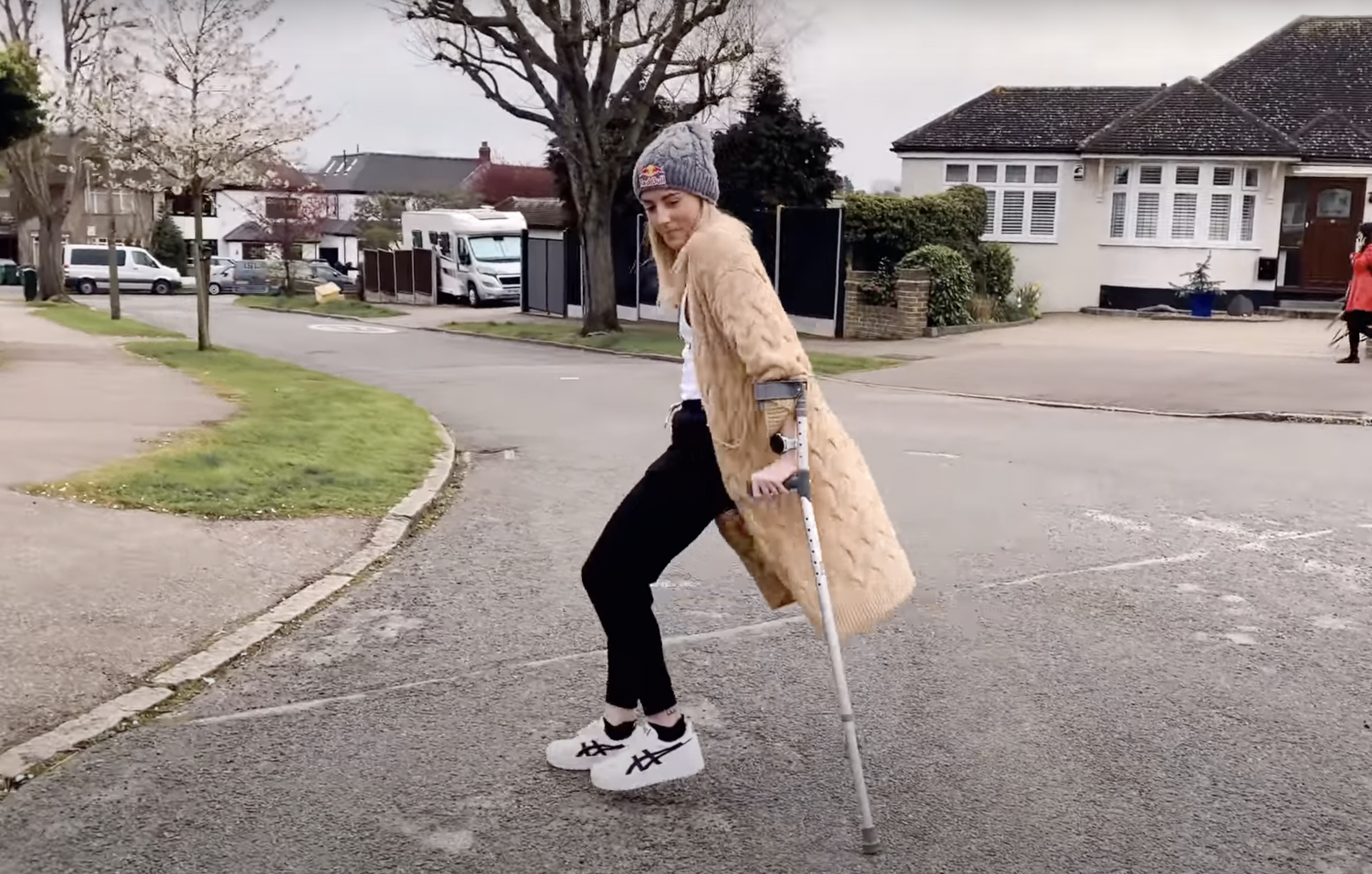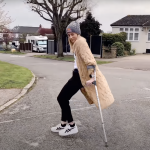“Obviously, any type of stress fracture is an impact injury. It happens from a stress in the bone, too much impact, any form of overload – in training or in stress in your life – can cause this to happen.” Last week, Lucy Charles announced to struggle with a stress fracture in her left hip, keeping her from racing some big events at the start of 2022, like the Ironman World Championship in St. George, but also the Pho3nix Sub-8 attempt. In a video, Charles explains how she seems to have sustained the injury to hopefully help other people prevent a stress fracture.
No strict diet and lack of supplements
One of the things that Charles thinks contributed to her stress fracture, is the long off season she had, in which she wasn’t always too serious about her diet. “During that time I am still ticking along, but some things slip in that time”, she explains. “We’re leading into Christmas and because I’m not in a strict training protocol, my diet isn’t as good – I eat more treats than I normally would, so I’m not always giving my body the nutrients that it needs from my diet.” Add some bad weather to that, resulting in a lack of vitamin D and you have a recipe for disaster, it turned out. “I was slack on taking my supplements, because I wasn’t doing the high levels of training that I’m used to. In hindsight, I’m never going to stop taking my supplements, which usually involve the likes of vitamin D, iron and calcium, all the things that would have helped to keep my bones strong.”
High training volume
After that long off season Charles was ready to go and excited about a big year. “The training load was high, but I was loving it, I was like relishing that hard work. We actually ran that training up very quickly, so there was quite a large overload in volume of training. That was at the same time that I had quite a lot of stress going on with Reece’s health condition (Charles husband, she hasn’t explained any details, ed.), so I had stress coming from all aspects. All of that would have contributed to a weakness in that bone.”
“Then it’s too late”
“You reach a critical point where the weakness comes, and then you start to have a problem in the bone”, Charles continues. “But by the time you feel this problem, it’s too late. While all of it is building up, you have no idea something is wrong”, she says, explaining why there were no early indications that something was off. When the pain lasted for more than three days, Charles felt like something was wrong and went for a scan to find out about the stress fracture in her hip.
‘We will be more cautious”
“Going forward”, she looks ahead. “We will be even more cautious with building up my volume of training, making sure my diet is spot on, making sure that I’m keeping my supplements right. I’m always hyper in tune with my body, as any elite athlete is, so just listening to my body every single day… even making a written diary of where I felt pain that day – if I do – and keeping a note if it comes back and how long it lasts.”
“I take my head off to Age-Group athletes”
“My job as a pro athlete is to push my body to the limit. I’m doing an Ironman-distance race, which is a crazy distance in itself. Injuries are high risk, we have to train high volumes, and then we race a ridiculous distance. My job is to train hard so that I can race them to the best of my abilities. […] injuries will happen, but as a pro, I have the ability to train and then recover, whereas Age-Group athletes… I take my head off to them, because your risk of injury is arguably even higher with high-stress jobs, trying to train around it, sometimes a poor diet because it’s convenience foods around your working hours and trying to train. This video could be even more important to you, to try to prevent these injuries from happening”, Charles addresses Age-Group athletes in specific.
Fortunately, during some check-ups a few days ago, Charles got some positive news: her bone density is normal. “Only my hips a bit less than the rest of the body, which is not really something to worry about. I was actually quite pleased, because athletes with a swim background are at more risk for stress bone type injuries, because growing up, we didn’t get impact on our bones”, Charles says.
“Being a swimmer and a female, I’m more at risk”
Another lesson, related to Charles being more vulnerable, was to run on a soft surface most of the time. “Looking back at training earlier this year, most was on a hard surface. The pavement and roads in Lanzarote are hard and compact. All of that would have contributed to getting to this point now. Being a female athlete, you’re also more at risk because our body goes through a cycle each month. Your body takes away calcium from your body to do your normal monthly cycle, that is going to be taken from your bones. If you don’t have enough calcium in your diet, you could be at risk of this type of injury. Being a swimmer and a female, I’m more at risk for this kind of injury”, Charles concludes.



